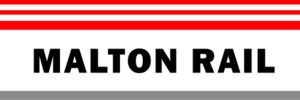Gillman Road Railway Station
| Gillman Road Railway Station EHB+0, dark. AndyMatthews (talk) 13:43, 28 January 2022 (UTC)
|
| Gillman Road Railway Station
Rolt Heights [85,19]
Basic Info:
|
Description
Gillman Road Railway Station is a train station located in the suburb of Rolt Heights along the border with Gibsonton to the south. Once a bustling commuter paradise the platforms are now silent, the citizens all gone, and the faint moans of zombies can be heard in the distance. The station formerly lay on the Yellow Line between Kelloway-Roles and Dimon Stations.
| Malton Rail Yellow Line (clockwise) | |||||
| Halse | Codman | Meade | Broad | Latter | Stranks | Gapper | Royal G | Phillipps | Broadbent | Kelloway-Roles P | Gillman | Dimon | Edge | Mornington | Rawlinson-Mechel P | Tolly | Darnell | Snaydon | Crosbie-Hemborrow F | Norton | Hembury | Colwill R | Beall | Cording O | Howarth | Hame B | Furzer | Turnock | Tobit | Beck N | Lamport | Northup-Cabble | Jenkins | Coutts | Charasse | McIlhargey | Plumb | Rennell | Hoyle | Clevely | Guppey-Brooks G | Corp | Spraggon P | Massey | Buck | Penning | Hope | Dye O | Hollard | Ruddle | Rumbell R | Carritt | Heathman | Nettleton N | Wooman-Underwood B | Bu | Newis-Reginaldus F | Halse | |||||
History
Gillman Road was once home to one of the most prosperous railway stations in the entireity of Malton. It was constructed during the industrial revolution as a depot of supplies going in and out of the city, and was only opened up to commuter transport in the early 1930s. During the war, it was once again shut down for civilians, and used for the all-important transport of Alcohol towards this industrial area, for the purposes of treating injuries, and for boosting morale on the home front.
Because of this historical significance, after its re-opening to the public in 1947, the railway recieved a large amount of acclaim, and even had small exhibits in the nearby museums, most notably the Riddell Museum, which featured it in its train exhibit of 1974. The exhibit featured large amounts of the cargo of the former train, and the stone wall from the station which had been blown out in world war two, leaving only the words "Golden Chutney" as part of some long-lost advertisement.
Barricade Policy
This building should be Extremely Heavily barricaded at all times. This is in accordance with the mutually supported Rolt Heights Barricade Plan set forth in agreement with local survivor groups. This building is meant to serve as a safehouse for Malton's veteran survivors.

It should be noted that as no specific survivor group monitors nor maintains the barricades associated with this barricade plan, so therefore it is not considered to be enforced. As such, survivors should always expect to find the barricades set at varying levels depending on the survivors inside the building. For the most part though, survivors should always expect to find this building over-barricaded rather than under-barricaded simply due to survivor nature.
Current Events
June 22nd, 2008 - The building is VSB+2. A portable generator has been set up. 1 zed outside. -- suver 03:12, 22 June 2008 (BST)
